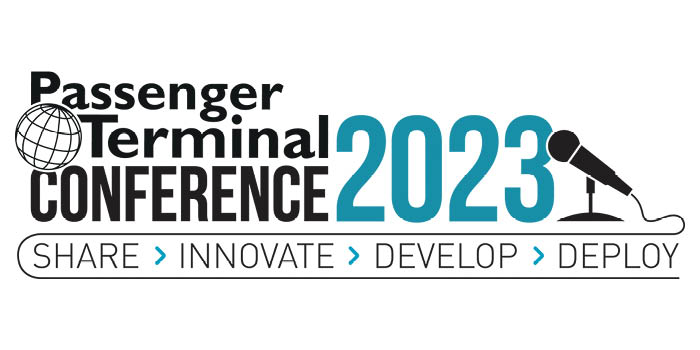Navaid Ahsan, head of aviation security (AVSEC) operations, Etihad Airways, presented a case study on the 2014 Karachi Airport attack in Pakistan, as part of the ‘Aviation security, border control and facilitation’ track on Day 2 of Passenger Terminal Conference.
In his presentation, Ahsan explored aviation security based on visible deterrence, layered security and multiple checks to pre-empt and counter any threat posed to civil aviation.
What was your presentation about?
In 2014, 10 terrorists stormed Pakistan’s largest airport at Karachi. Airport security forces battled the militants and eliminated all the terrorists within one hour and clearance operations lasted for the next five hours, till dawn. My talk used the Karachi airport attack in 2014 as a case study to examine the visible deterrence, layered security and multiple checks required to ensure aviation security. These factors are integral to pre-empt and to counter any threat posed to the civil aviation industry. Creating a security system like this requires employing all the available resources in terms of people and materials with extensive training and regular mock exercises.
How important is visible deterrence to aviation security? What role does it play?
Presently, airport security is more inclined toward security airside or the restricted area of airports. Recent attacks at the airports have shown that mostly the attacks took place at landside. There is a dire need to address these new challenges as to how airports can be kept safe from all the threats. Based on a risk assessment, security staff are deployed to be seen all around the airport to deter any potential terrorist. It’s vital that deployed forces remain well prepared all times to thwart any attempt of terrorist act.
What have airports implemented to avoid attacks?
The methodology used at the airports to combat terrorism differs from country to country based on their risk assessments and geopolitical situation. Keeping in view the present scenario, where terrorism is no longer a regional issue but has become a global issue, countries must adopt the following measures:
- Profiling and monitoring – Carrying out profiling, surveillance and monitoring through patrols and CCTV, requires a well thought out plan and adoption of laid down procedures along with intensive training.
- Layered security and multiple checks – These are required to counter any attack from landside, and to create hurdles and gain time for reserves to react to any threat, and keeping the possible terrorist away from the terminal building, runway and apron.
- Induction of modern weapons. Necessary to counter any threat, as terrorists can use any type of weapon at will. Therefore, all security personnel at the airport should have the most modern and effective weapons available with sufficient ammunition.
- Strong reserves/quick reaction forces (QRFs) – To respond to any eventuality at any place at the airport, it is necessary to plan and deploy strong reserves and QRFs. These should be well located and spread over the area with clear identification of the area of operations.
- Coordination between local enforcement agencies (LEAs) for security around airports – The first responder to any eventuality is airport security, but to have second and third tier response from LEAs, it is necessary to have better coordination with those agencies operating outside the perimeter of an airport.
- Robust vehicles – Good and robust vehicles should be employed for quick reaction times with bulletproof protection, so as to reach the point of incident in the shortest possible time.
- Perimeter intrusion detection system (PIDS) – A terrorist attack will not always be from the main entry point, it can be from any perimeter, so therefore it is necessary to have layered fencing around the airport for early detection of an intrusion and to gain time for QRFs to react. The PIDS is a multilayered structure supported by fixed PTZ and TI cameras.
 How should airports protect persons with disabilities or reduced mobility in emergencies?
How should airports protect persons with disabilities or reduced mobility in emergencies?
Communicate with passengers with reduced mobility (PRMs) and include their evacuation in the overall evacuation plan. Currently, planning is compliance-driven and mobility-focused, with little focus on communicating with PRMs in airport emergencies. Airport authorities must provide a variety of aid and services during normal operational conditions to PRMs so that these can be effectively provided to them during an emergency.
Airport emergency plans must also include an effective emergency communications strategy, supporting evacuation training and incorporating PRMs into emergency exercises.
The design phase of an airport should also incorporate and integrate accessibility features to ensure smooth movement and effective evacuation. To assist PRMs to find evacuation routes, there should be signage and maps displayed at a lower level, with some clear identification of exit doors, lines on the floor or through signage in braille, bigger fonts and multiple languages.
How can security checkpoints support passenger throughput while ensuring airport security?
To counter any attack from landside, the best way is to have layered security and multiple checks of security, to create hurdles and gain time for reserves to react to any threat, as well as keeping the possible terrorist away from the terminal building, runway and apron. This is an approach which is very effective and tested at the airports in Pakistan. Layers include:
- Vehicle entry point – Profiling and physical checking of vehicles with vehicle scanners and under vehicle inspection systems (UVIS).
- First security checkpoint – All baggage is checked in along with body searches through walk-through metal detectors (WTMD) for security, customs and drug control.
- Second security checkpoint – All hold baggage is checked through explosive detection security (EDS) CT x-ray machines.
- Third security checkpoint – All hand baggage is checked along with body search through WTMD for security, before entering the departure lounge.
- Boarding bridge entry to aircraft – Boarding pass is checked before entering aircraft.
- Security of aircraft at apron.
To hear more valuable industry insights from top aviation executives, it’s not too late to book a conference pass for the last day of Passenger Terminal Conference, taking place on March 16, in Amsterdam, Netherlands.

